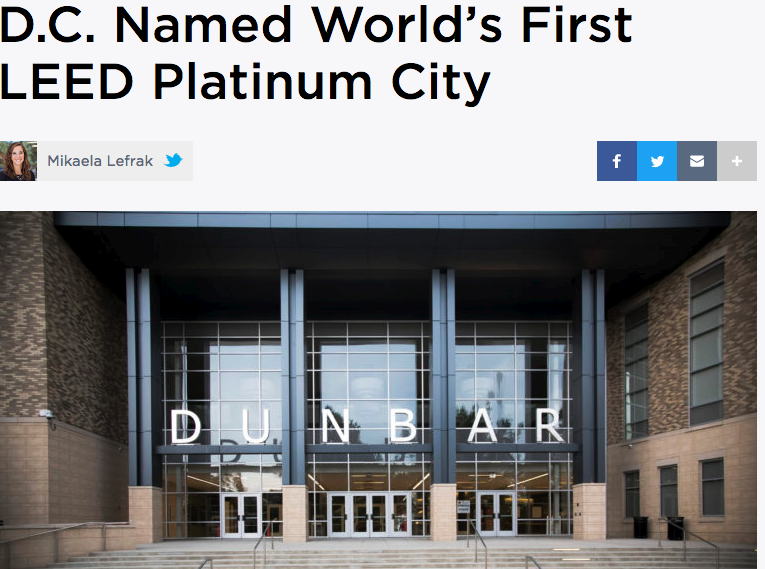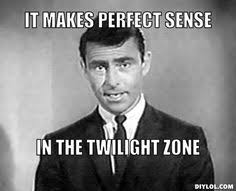How can a city be named the first “LEED Platinum” city and be building freeways in its suburbs?
Submitted for your approval: Two recent news items from our nation’s capital. In the first, Washington DC proudly announced that has been proclaimed the world’s first LEED Platinum city–based on the number of LEED-certified buildings it’s built in the past decade. Here’s a story from Washington’s WAMU:
The second news item is about the region’s progress toward building a $2.3 billion, 22-mile long I-66 freeway widening project to fuel ever longer commutes from its most distant, and still sprawling suburbs. To be fair, several of the lanes will be high occupancy toll lanes, and will price travel and encourage carpooling; but the net effect of the project is to greatly expand the capacity for car travel. Meanwhile, massive maintenance and repair problems plague the DC Metro subway system, and its financial health seems to be in even worse shape.
To us, this raises a big question: How can you bee a LEED platinum city, if you are spending billions widening freeways, and your public transit system is in physical and financial disarray?
The LEED Platinum City status is handed out by the US Green Building Council, and while it’s a step forward from the structure-by-structure approach to sustainability, it’s looks a lot like a lifetime achievement award for getting (and ponying up for) LEED certification for new buildings. And keep in mind, there are real questions as to whether LEED certified buildings are, on average, any more energy efficient than other new buildings. Washington DC has more than 120 LEED certified projects according to the Green Building Council but that’s still a tiny fraction of the entire building stock of of tens of thousands of commercial, office, industrial and residential properties in the city. As related by WAMU, erecting lots of LEED certified buildings seems to be a key reason Washington earned platinum status:
On the green building front in particular, the District leads the way within the United States. The city has more LEED-certified projects per capita than any state. Many of those facilities are part of the D.C. public school system, including Brookland Middle School, which recently became the third D.C. Public School facility to receive a LEED Platinum certification.
Like many other US city leaders, DC Mayor Muriel Bowser makes a point of declaring the city’s commitment to following the Paris Climate Accords. But a rhetorical commitment to fighting climate disruption requires something more than slightly more efficient buildings. In most cities, transportation is a principal source of greenhouse gas emissions. No matter how many LEED buildings you build inside the beltway, if your regional transportation system is built on an ever-expanding freeways, it’s hard to see how you can think of your city as “sustainable.”
We seem to be stuck in this unfortunate world of cognitive dissonance, where mayors and architects proudly attach LEED plaques to relative handfuls of green buildings in one part of town, while at the same time, just down the road, massive amounts of public resources are subsidizing auto travel and sprawl.
As we suggested when it came to the solar powered 1,400 space parking garage put up by the National Renewable Energy Laboratory, and a Zero Net Energy Home with a sub-50 walk score, it takes a particular kind of tunnel vision to look only at the energy used by particular buildings, and to completely ignore the energy and pollution intrinsically associated with the urban (or suburban) landscape and transportation system of which they are a part: A kind of tunnel vision that puts you squarely in the twilight zone.



